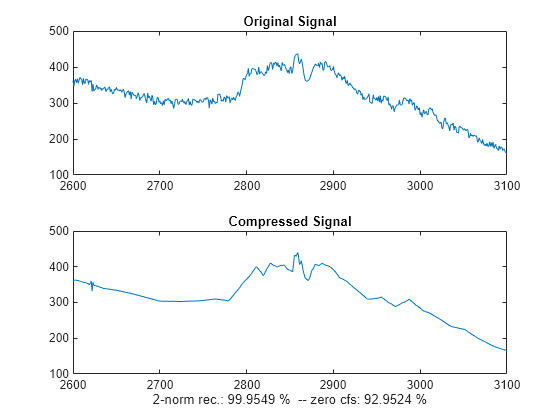wdcbm
Thresholds for wavelet 1-D using Birgé-Massart strategy
Description
[
returns level-dependent thresholds thr,nkeep] = wdcbm(C,L,alpha,M)thr and numbers of coefficients
to be kept nkeep, for denoising or compressing a signal.
wdcbm uses a wavelet coefficients selection rule based on the
Birgé-Massart strategy to obtain the thresholds.
[ is the wavelet
decomposition structure of the signal to be denoised or compressed, at level C,L]N
= length(L)-2. alpha and M are
real numbers greater than 1.
wdcbm(
is equivalent to
C,L,alpha)wdcbm(.C,L,alpha,L(1))
Examples
Input Arguments
Output Arguments
More About
References
[1] Birgé, Lucien, and Pascal Massart. “From Model Selection to Adaptive Estimation.” In Festschrift for Lucien Le Cam: Research Papers in Probability and Statistics, edited by David Pollard, Erik Torgersen, and Grace L. Yang, 55–87. New York, NY: Springer, 1997. https://doi.org/10.1007/978-1-4612-1880-7_4.
Version History
Introduced before R2006a
